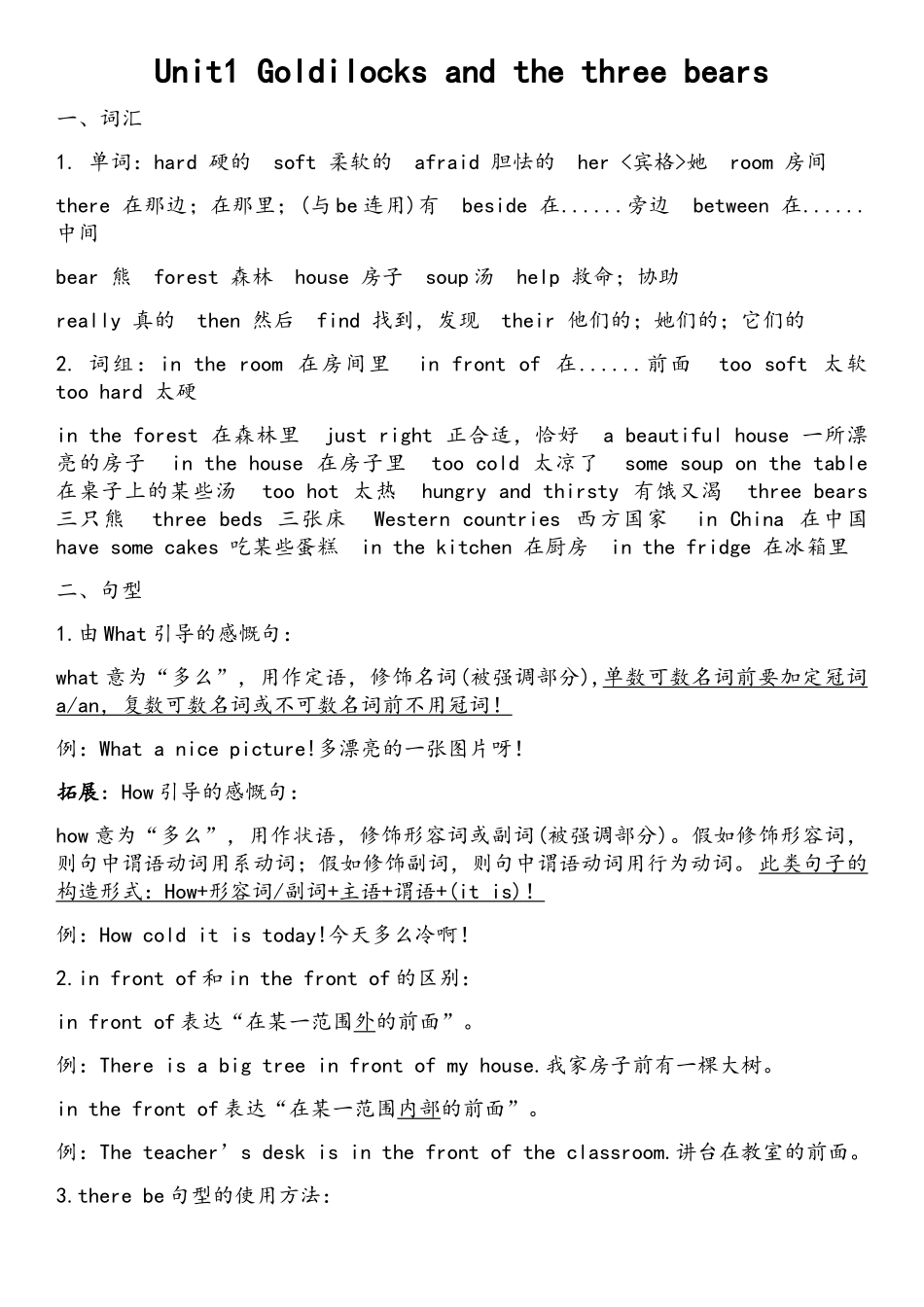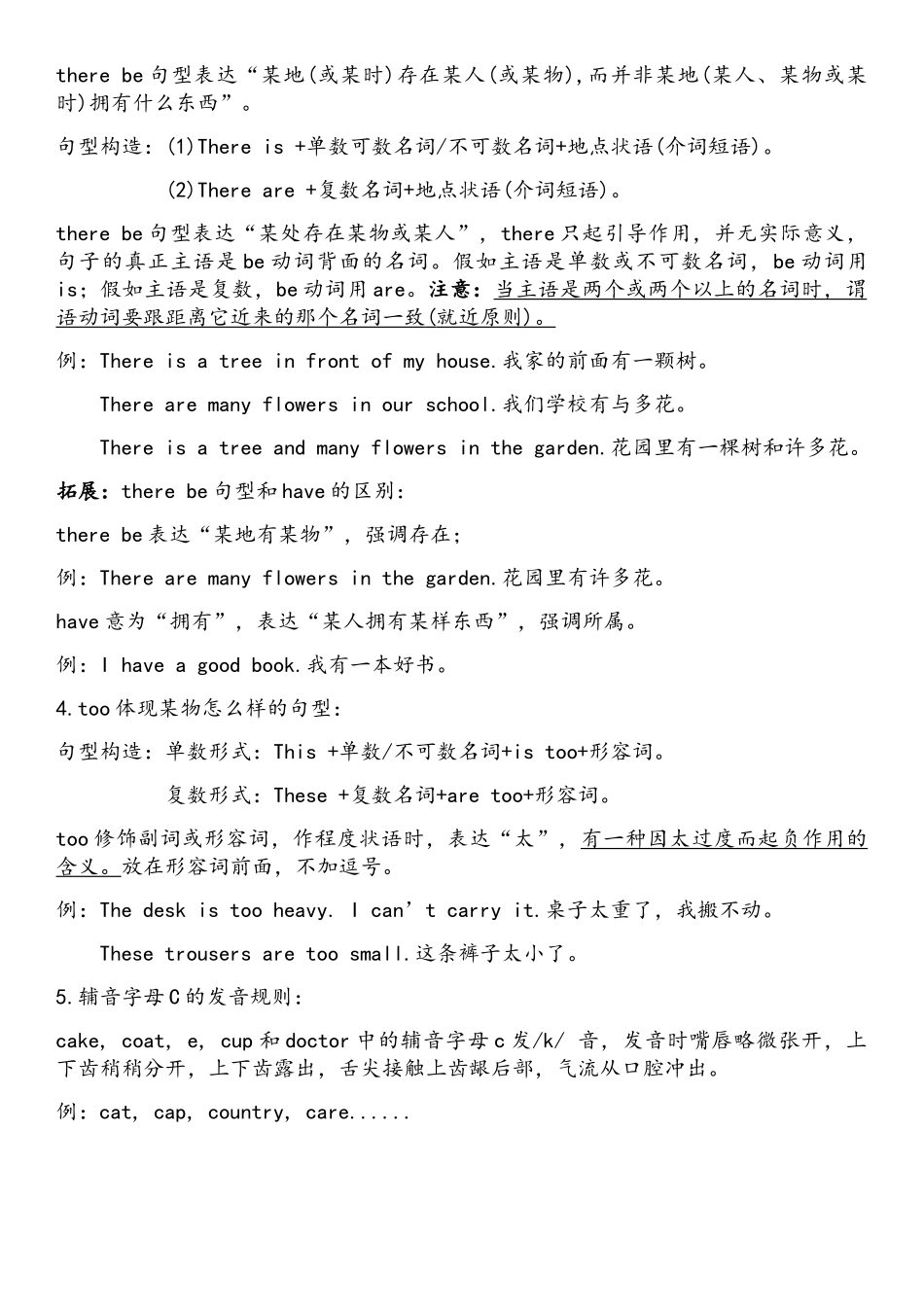Unit1 Goldilocks and the three bears 一、词汇1. 单词:hard 硬的 soft 柔软的 afraid 胆怯的 her <宾格>她 room 房间 there 在那边;在那里;(与 be 连用)有 beside 在......旁边 between 在......中间bear 熊 forest 森林 house 房子 soup 汤 help 救命;协助really 真的 then 然后 find 找到,发现 their 他们的;她们的;它们的 2. 词组:in the room 在房间里 in front of 在......前面 too soft 太软 too hard 太硬 in the forest 在森林里 just right 正合适,恰好 a beautiful house 一所漂亮的房子 in the house 在房子里 too cold 太凉了 some soup on the table 在桌子上的某些汤 too hot 太热 hungry and thirsty 有饿又渴 three bears 三只熊 three beds 三张床 Western countries 西方国家 in China 在中国 have some cakes 吃某些蛋糕 in the kitchen 在厨房 in the fridge 在冰箱里二、句型1.由 What 引导的感慨句:what 意为“多么”,用作定语,修饰名词(被强调部分),单数可数名词前要加定冠词a/an ,复数可数名词或不可数名词前不用冠词! 例:What a nice picture!多漂亮的一张图片呀!拓展:How 引导的感慨句:how 意为“多么”,用作状语,修饰形容词或副词(被强调部分)。假如修饰形容词,则句中谓语动词用系动词;假如修饰副词,则句中谓语动词用行为动词。 此类句子的构造形式: How+ 形容词 / 副词 + 主语 + 谓语 +(it is) ! 例:How cold it is today!今天多么冷啊!2.in front of 和 in the front of 的区别:in front of 表达“在某一范围外的前面”。例:There is a big tree in front of my house.我家房子前有一棵大树。in the front of 表达“在某一范围内部的前面”。例:The teacher’s desk is in the front of the classroom.讲台在教室的前面。3.there be 句型的使用方法:there be 句型表达“某地(或某时)存在某人(或某物),而并非某地(某人、某物或某时)拥有什么东西”。句型构造:(1)There is +单数可数名词/不可数名词+地点状语(介词短语)。(2)There are +复数名词+地点状语(介词短语)。there be 句型表达“某处存在某物或某人”,there 只起引导作用,并无实际意义,句子的真正主语是 be 动词背面的名词...


